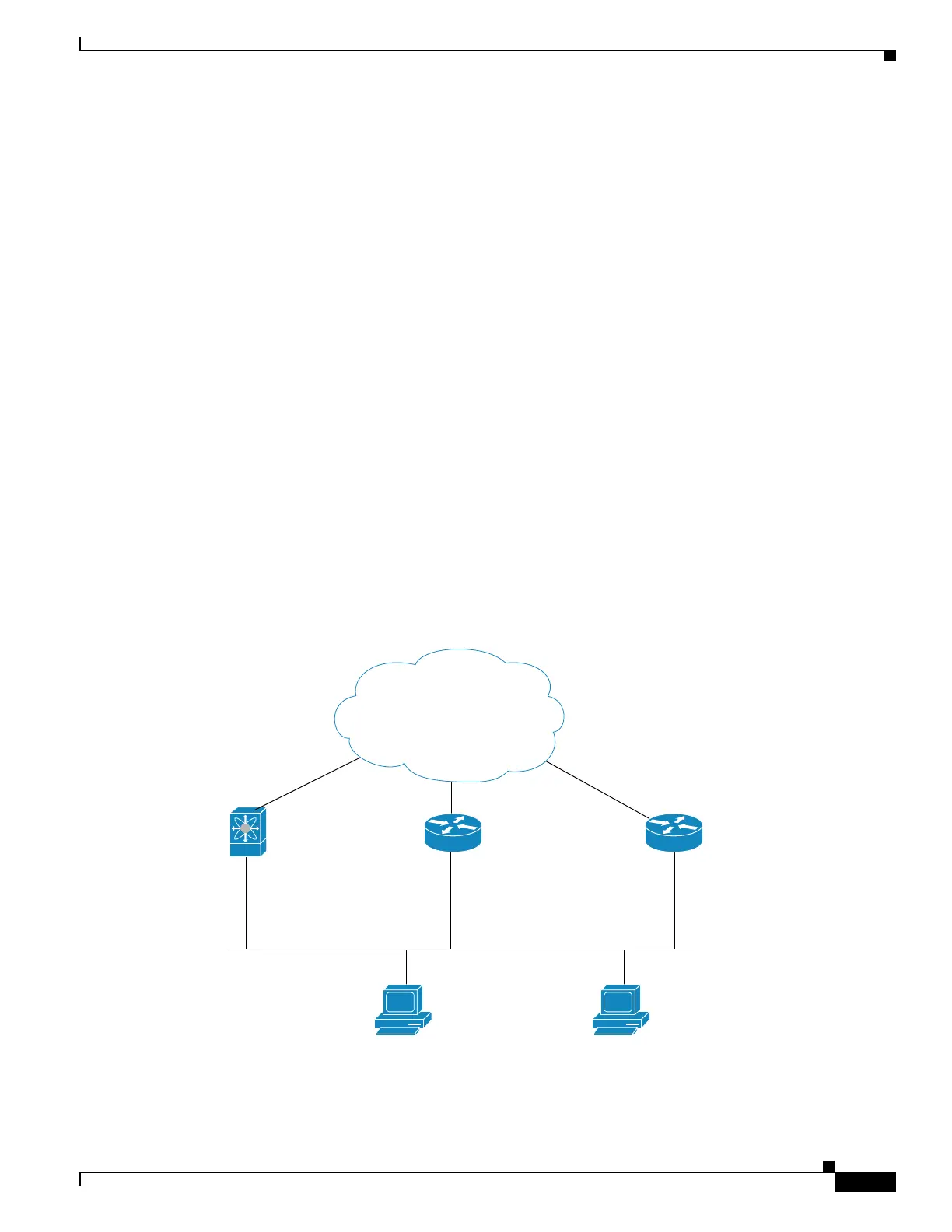Send document comments to nexus7k-docfeedback@cisco.com.
18-5
Cisco Nexus 7000 Series NX-OS Unicast Routing Configuration Guide, Release 4.x
OL-20002-02
Chapter 18 Configuring GLBP
Information About GLBP
GLBP Load Balancing and Tracking
You can configure the following load-balancing methods for GLBP:
• Round-robin—GLBP cycles through the virtual MAC addresses sent in ARP replies, load balancing
the traffic across all the AVFs.
• Weighted—AVG uses the advertised weight for an AVF to decide the load directed to the AVF. A
higher weight means that the AVG directs more traffic to the AVF.
• Host dependent—GLBP uses the MAC address of the host to determine which virtual MAC address
to direct the host to use. This algorithm guarantees that a host gets the same virtual MAC address if
the number of virtual forwarders does not change.
The default for IPv4 networks is round-robin. You can disable all load balancing for GLBP on an
interface. If you do not configure load balancing, the AVG handles all traffic for the hosts while the other
GLBP group members are in standby or listen mode.
You can configure GLBP to track an interface or routes and enable the secondary virtual forwarder to
take over if a tracked link goes down. GLBP tracking uses weighted load-balancing to determine whether
a GLBP group member acts as an AVF. You must configure the initial weighting values and optional
thresholds to enable or disable this group member as an AVF. You can also configure the interface to
track and the value that will reduce the interface’s weighting if the interface goes down. When the GLBP
group weighting drops below the lower threshold, the member is no longer an AVF and a secondary
virtual forwarder takes over. When the weighting rises above the upper threshold, the member can
resume its role as an AVF.
Figure 18-2 shows an example of GLBP tracking and weighting.
Figure 18-2 GLBP Object Tracking and Weighting
IP Network
Ethernet 3/1
Router 1
GLBP group 1
Router 3
GLBP group 1
AVG
Router 2
GLBP group 1
Ethernet 1/2:
Tracks: e 3/1, decrement 30
weight: 120, lower 85, upper 110
AVF for vMAC1
load balance: weighted
Ethernet 2/2:
Preempt
weight: 100 (default)
secondary VF for vMAC1
load balance: weighted
AVF for vMAC2
load balance: weighted
vMAC1 vMAC2
Host 1 Host 2
185060

